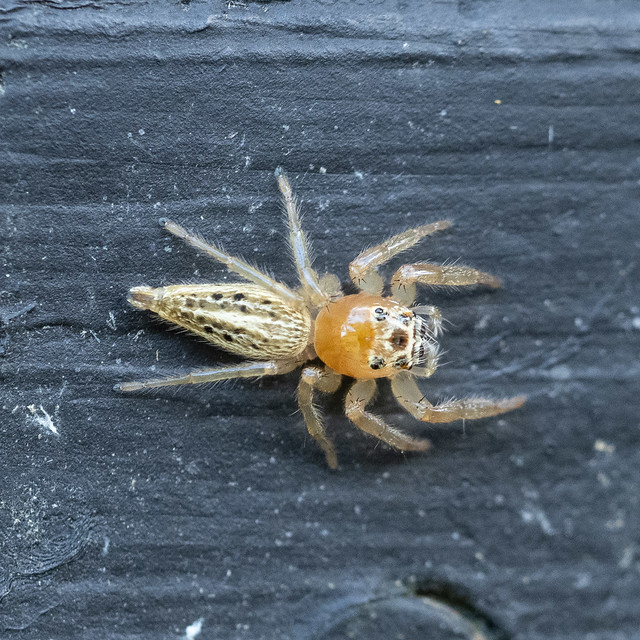The main reason to go to Drake Bay is to visit Corcovado National Park. It's not the easiest place to get to. There is a road but it's challenging 4wd territory. The better alternative is by boat, which wouldn't be so bad except there's no dock in Drake's bay so you end up jumping out of the boat into the water, which wouldn't be so bad except when there are 4 foot waves tossing the boat around. At least it's a sandy beach in Drake's Bay. A boat ride is also required to get to the Sirena entrance to the park, where you also have to jump out into the water, but there it's a rocky shore. And depending on your schedule, you may end up spending a night in Sierpe where you catch the boat. Sierpe has limited choices for food and lodging. All of our group except me ended up with stomach problems after Sierpe, putting a damper on the trip to Drake Bay.
Our hotel in Drake Bay was up on the hill with a great view of the bay
There were green iguanas in the trees and many birds around.
Corcovado is the largest park in Costa Rica and one of the largest remaining areas of lowland tropical forests anywhere. You have to have a guide to go in the park and go in a group. We had eight people in our group, which wasn't bad, although there were many other groups so it wasn't exactly a wilderness experience. The advantage of the guide is that they know where animals can be found, and you see much more than you would otherwise.
While I was happy to get photos of these animals, the challenges of the dense forest mean they're not very good (by my standards).
There are four kinds of monkeys in Costa Rica - Howler, Spider, Squirrel, and Capuchin. We saw Howler and Spider here.
Costa Rica is known for its sloths. We saw one Three-toed Sloth although it was sleeping in an awkward spot to get a good photograph. (Not very considerate of it!)
We were also lucky enough to see this Tamandua anteater. They spend a lot of their time up in the trees. It was moving around but I think it was a little curious about us, which allowed me to get this shot.
Tapirs are another iconic (and endangered) Costa Rican animal. We saw two different ones, but they were both sleeping in mud wallows, surrounded by vegetation.
There are two kinds of peccaries here, White-lipped and Collared. We only saw Collared Peccaries, which I've also seen in the southern USA where they're known as javalinas. We also saw Coatis (a bit like raccoons) but I didn't get a decent photo of them.
We didn't see a lot of birds in the park. The most impressive were the Great Curassow. We saw both males (all black) and females like this one. For a change the female birds are more colorful. They're quite large birds, about the size of a wild turkey.
I was happy to spot these Basilisk lizards, although the rest of the group wasn't interested. They're known as "Jesus lizards" because of their ability to run across water. The rest of the group was busy looking for the baby Spectacled Caimens.
The guides are mostly looking for the larger, more "famous" birds and animals. At one point, when our guide came over to see what I was photographing, his comment was "oh, it's just a spider". Personally, I thought it was quite an interesting creature.
See also a post from our previous trip.
See all 58 photos in this batch



















No comments:
Post a Comment